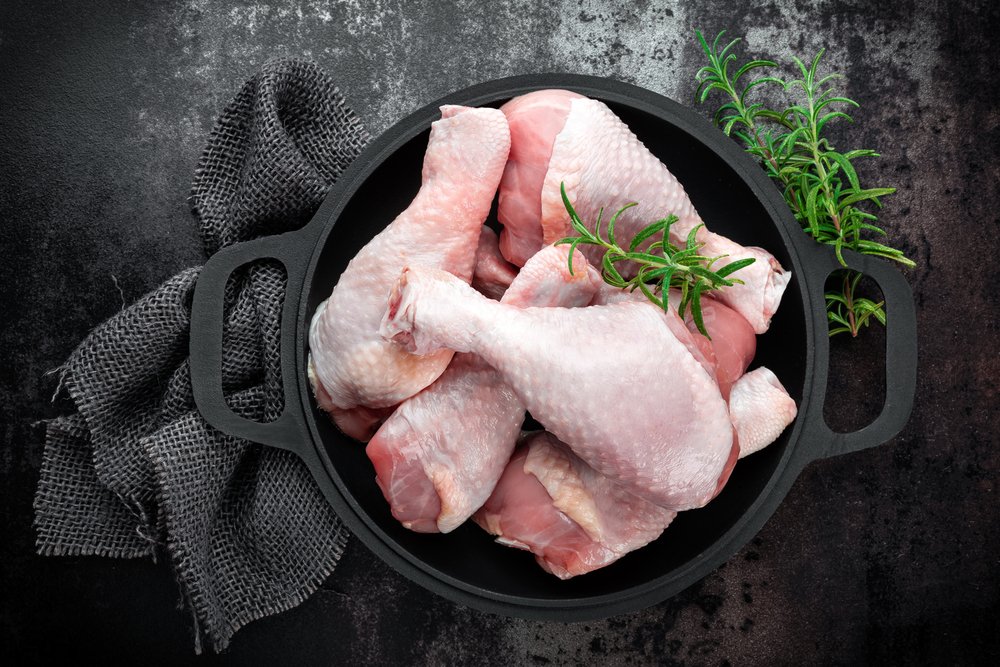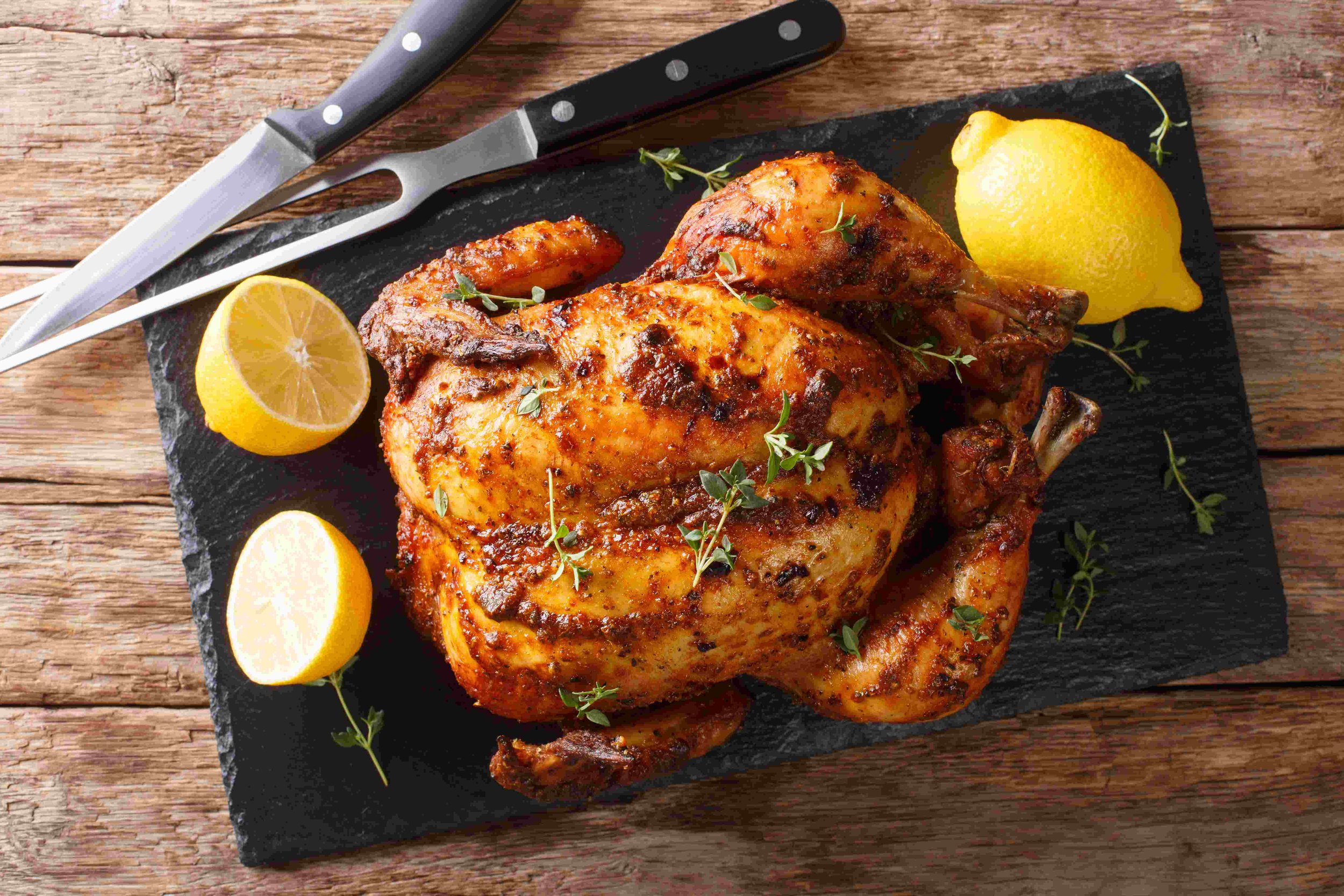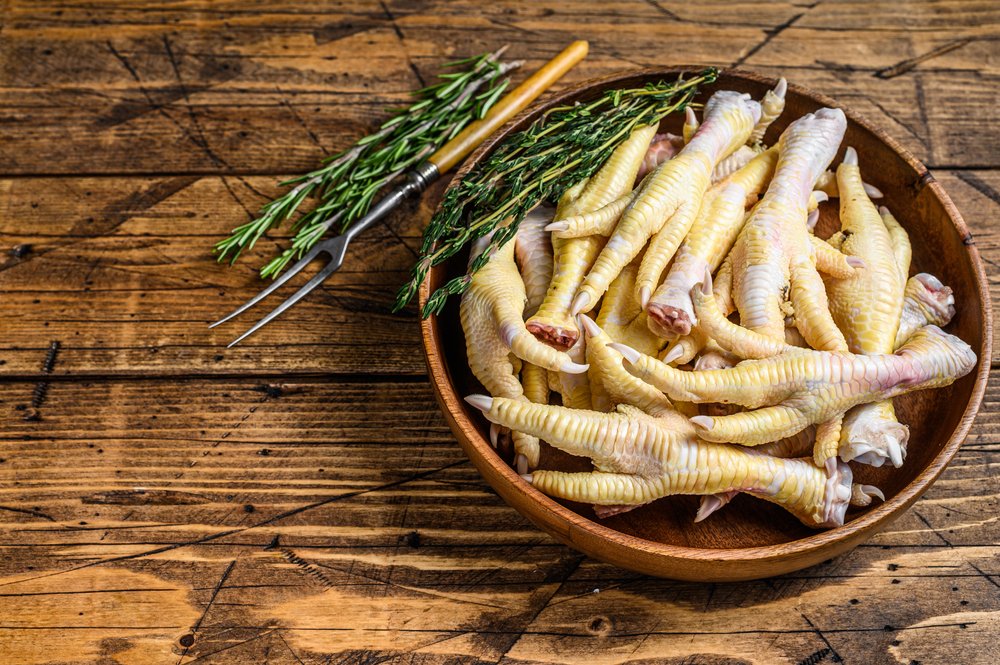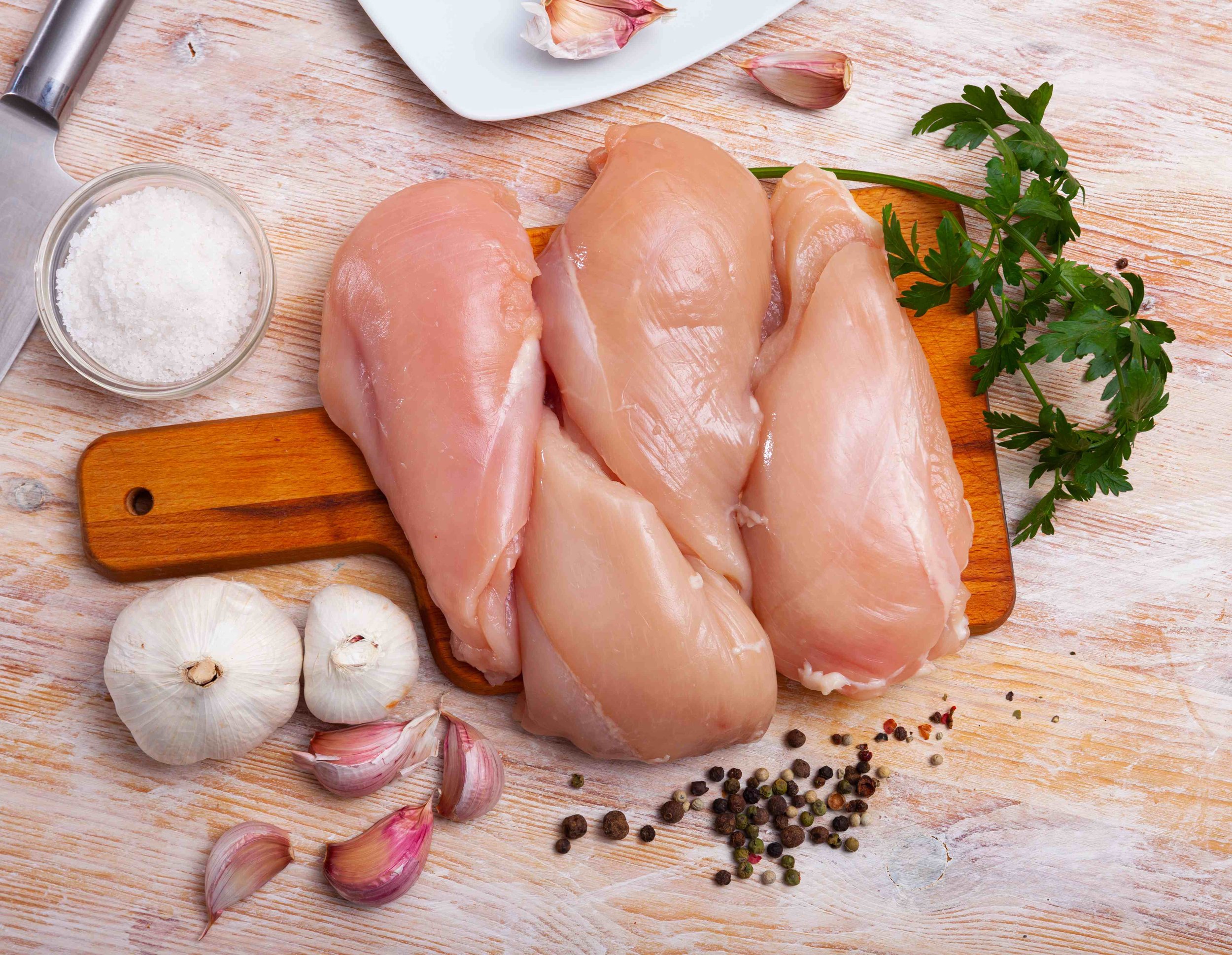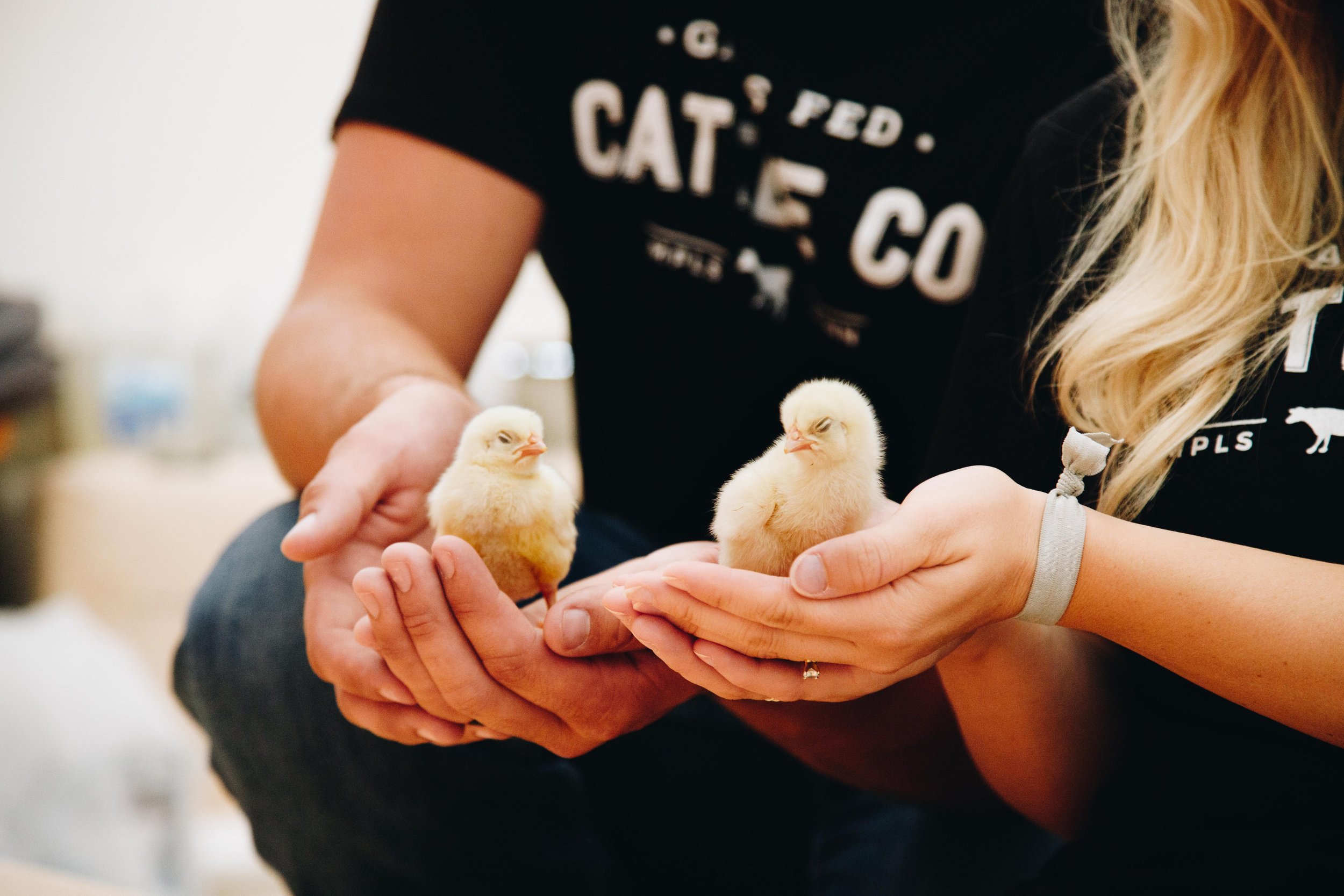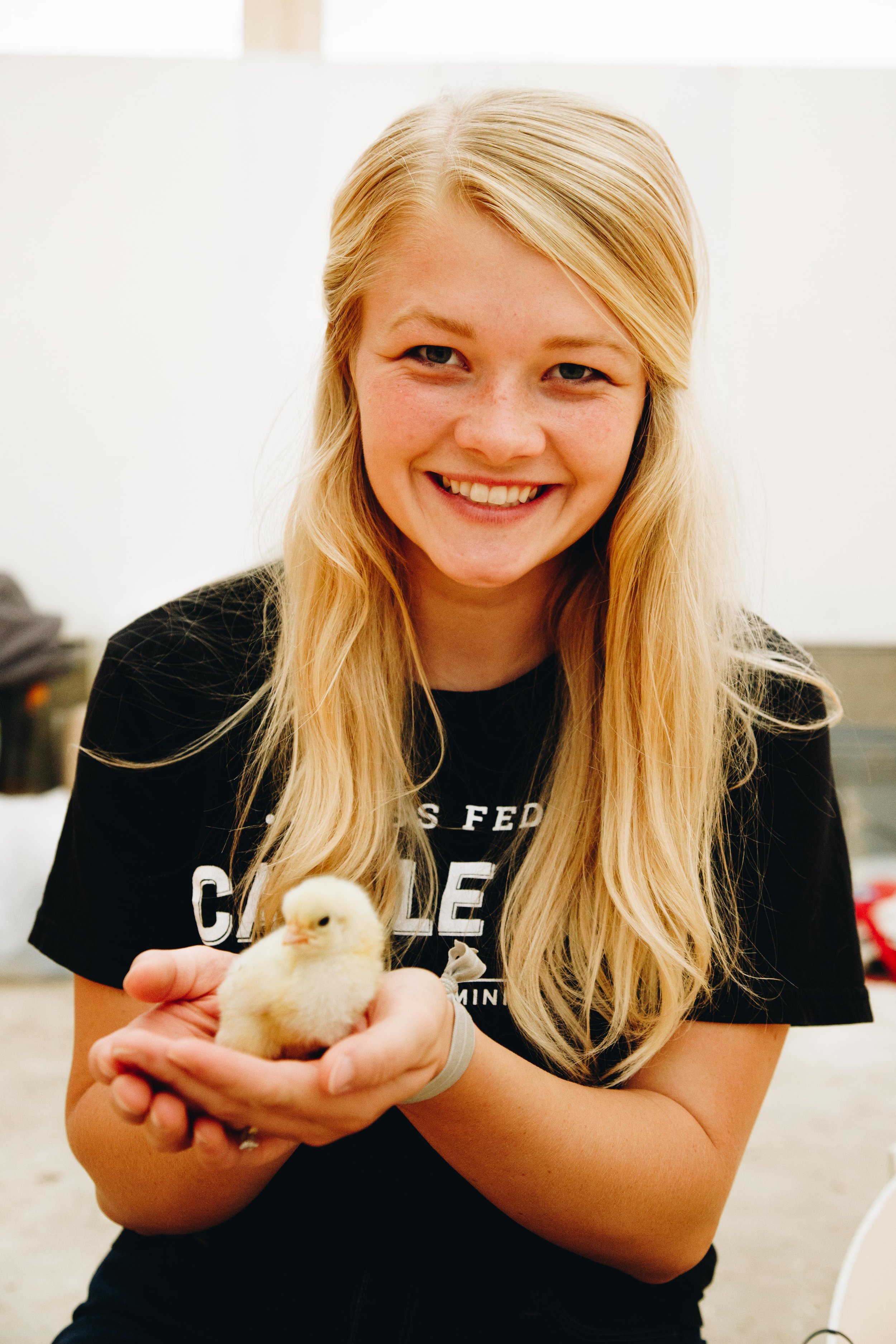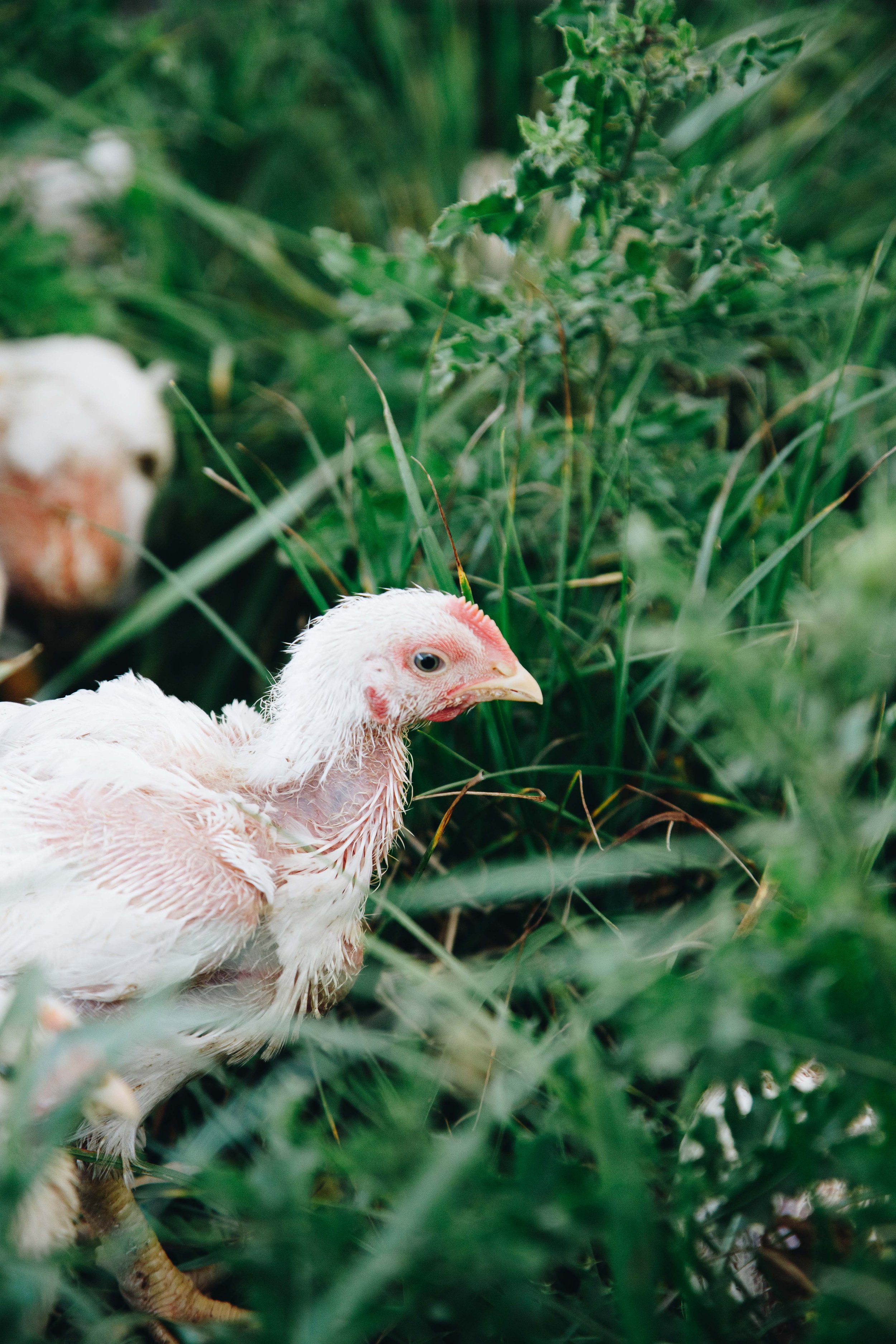Corn and Soy Free Pastured Chicken Results
We’re so excited to update you with the results of our chicken grant nutritional testing! In case you missed it or are new here, we received two grants to do research on our pastured chicken. Because chickens do not have a ruminant stomach, we need to supplement them with feed while they are on pasture. We fed two different types of feed - a non-GMO corn and soy based feed and an organic corn and soy free feed - and recorded the growth and health differences in the chickens and nutritional differences in the meat. If you want to continue reading, check out our original blog about the grants, how we raise our pastured chickens and this update from part of the way through the summer. While we weren’t able to get enough funding to also get nutritional testing on conventionally raised chicken, there are many studies comparing the differences between pasture raised chicken to conventionally raised chicken. Without further ado, here’s the results!
A complete fatty acid profile was conducted on the meat from four chickens in each of the four groups in the three batches of chickens we raised throughout the summer. Most of the values were below detectable levels, except the ones reported below. While we did have help analyzing the data, we are not nutritional experts by any means!
Omega-3 Fatty Acids
There are three main omega-3 fatty acids, ALA, EPA and DHA. The two feed treatments had limited significant effect on EPA and DHA (they were not present at detectable levels in the meat). In the meat of the corn and soy free groups, ALA was .128% and .03% in the corn and soy groups. Omega-3 fatty acids are important to human health. Higher levels of Omega-3 fatty acids aid in heart health, lowers triglycerides (fats) in blood, and has anti-inflammatory properties. An Omega-3 to Omega-6 ratio closer to 1 is commonly accepted as being better for health. The ratio of the meat from the corn and soy free chickens was 1:1.3 whereas the meat from the corn and soy chickens was 1:11.
The pastured hoop house was moved every day to fresh grass. We pull it ahead one full space with our truck.
Alpha-tocopherol (Vitamin E)
The two feed treatments also showed a difference in alpha-tocopherol (Vitamin E) content in the meat tissue. Alpha-tocopherol is the most active form of Vitamin E for animals. The corn and soy free groups had 1.33 mg/100g of alpha tocopherol in the meat compared to .68 mg/100g in the corn and soy fed groups.
The Vitamin E contents in the corn and soy free starter is 50 IU/pound minimum and 35 IU/pound minimum in the grower whereas the Vitamin E in the corn and soy starter and grower is 5 IU/pound. The higher levels of Vitamin E in the corn and soy free feed is one reason there are higher amounts of Vitamin E in the meat tissue samples in the corn and soy free chickens. However, because we were unable to get the specifics of the feed rations, it is unclear if the higher levels of Vitamin E is caused by the major ingredients such as organic peas, barley and flax meal, or if the Vitamin E levels were higher in the premix compared to the corn and soy feed. The increased amount of Vitamin E in the meat tissue from the corn and soy free chickens could also be due in part to the flax seed in the feed.
Observations
While the meat from the corn and soy free pastured chickens did show some nutritional differences, we did not feel they were as healthy as the corn and soy chickens overall while they were on our farm. They had a higher mortality rate and were less resilient when exposed to sickness. Unfortunately, the first batch of chicks were sick when they arrived after being exposed to a sickness at the hatchery. As odd as it sounds, they also did not grow their feathers until much later than the chickens supplemented with corn and soy feed, which is a visual sign of poor health in the corn and soy free chickens. The corn and soy chickens grew much quicker than the corn and soy free chickens, even more than we anticipated, which caused us to need more feed and more time before the corn and soy free chickens reached a size large enough for processing. Thankfully for our farm, the grant helped fund our research and we were able to still make make a small profit this year, but it was clear that in future years we would need to charge a higher price for the corn and soy free chickens to make it a sustainable enterprise for our farm.
We are happy to share any details and could type so much more about the on-farm side of raising pastured chickens. Please reach out if you have questions! Once the grant reports are published, we will link them here. As always, we will keep you updated as we plan for the upcoming year. We have not decided whether we’ll raise both types of pastured chickens or not. If you have purchased pastured chicken from us, thank you! If you would like to, please take a look at what we have available in our online store.

